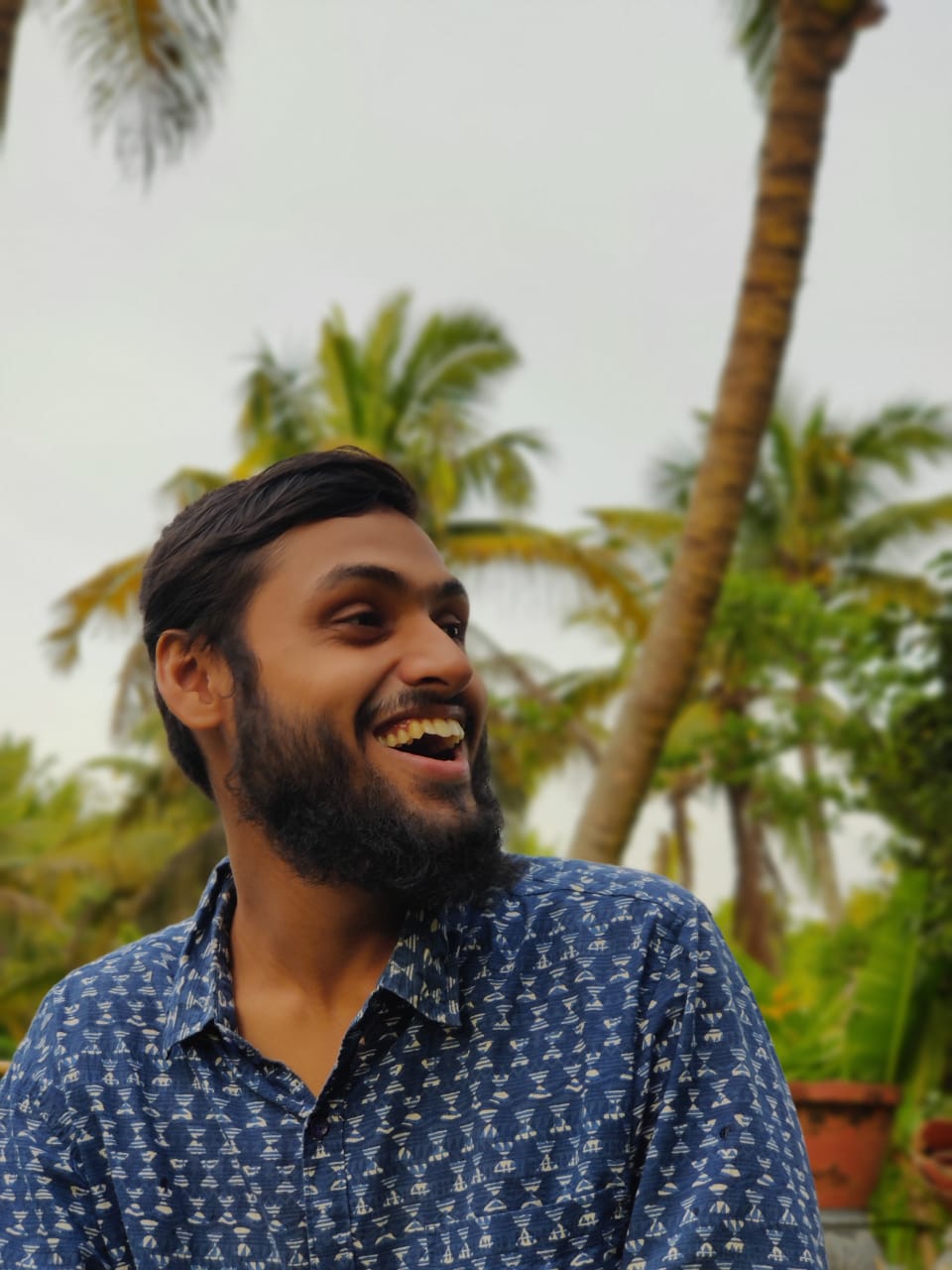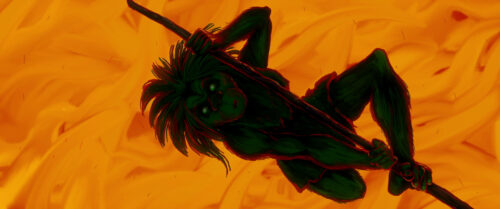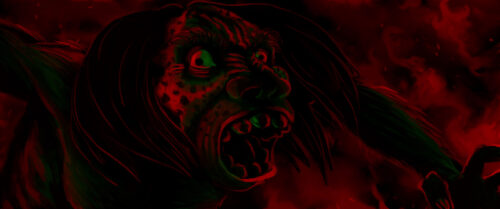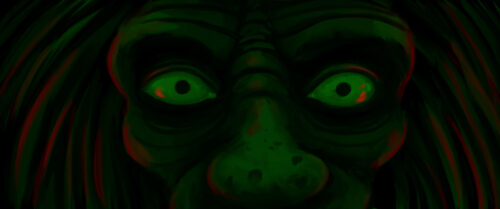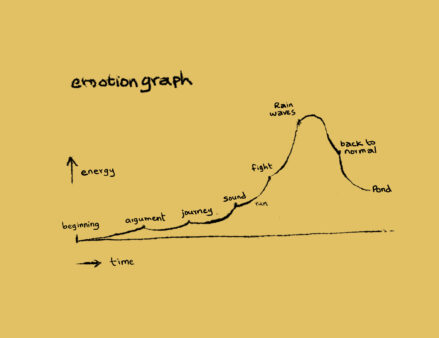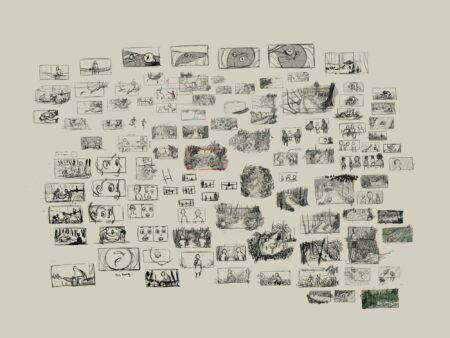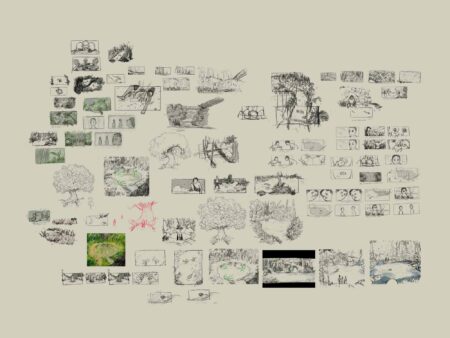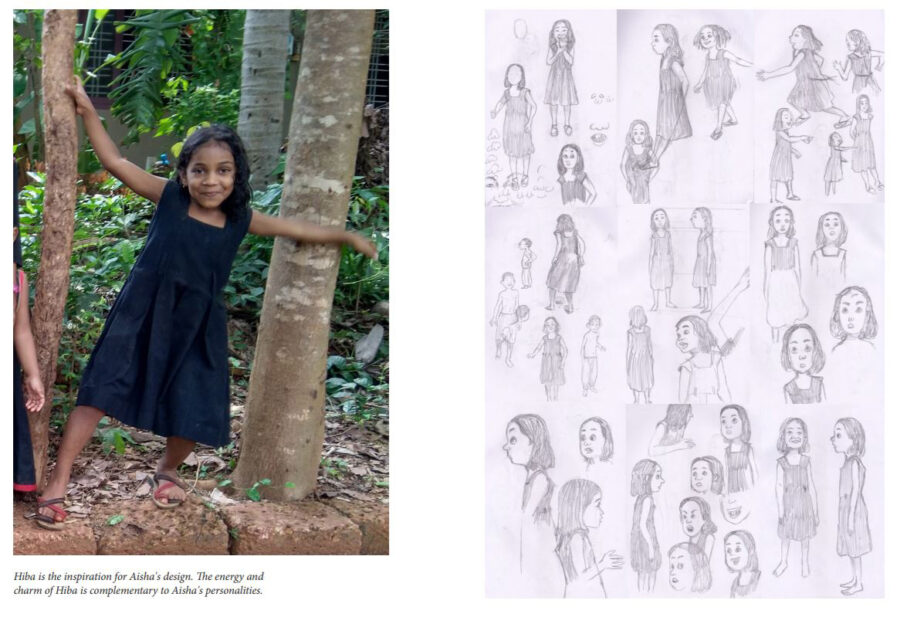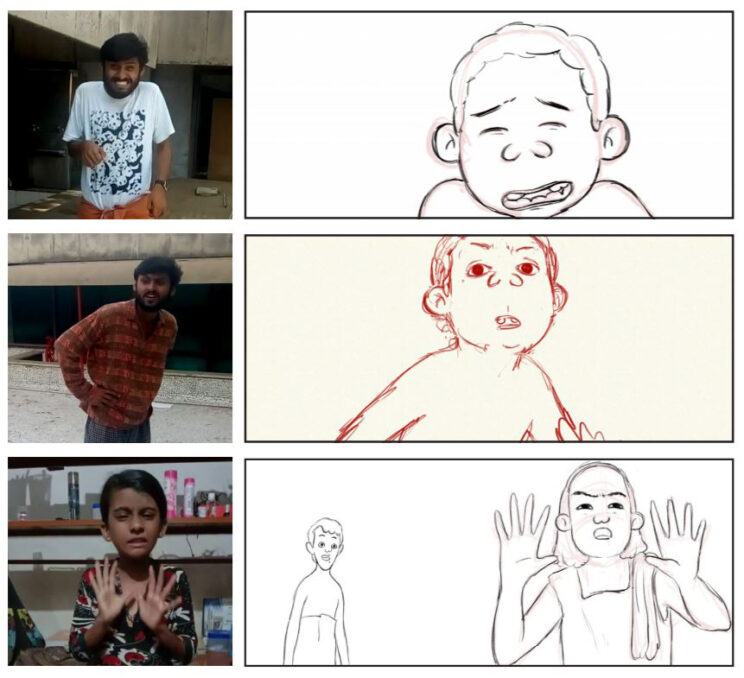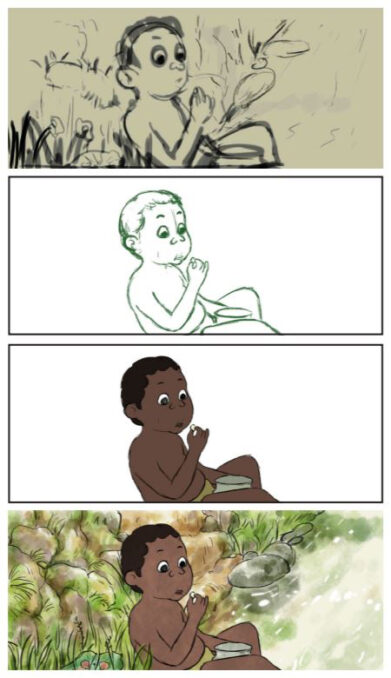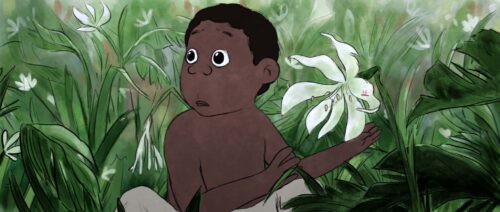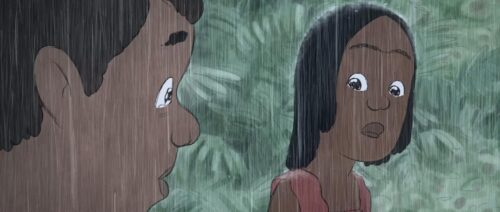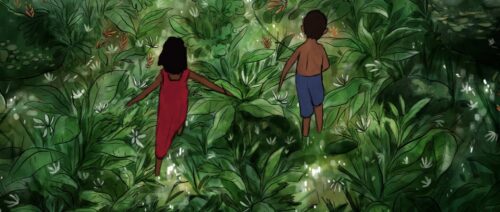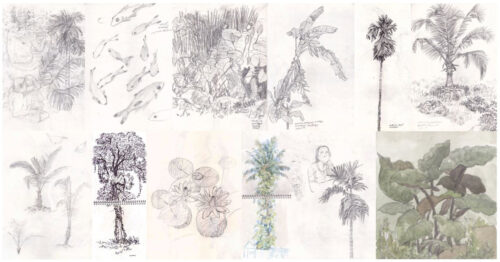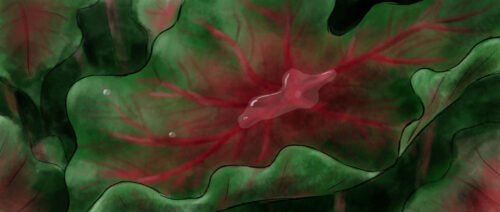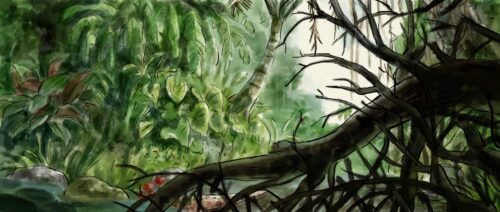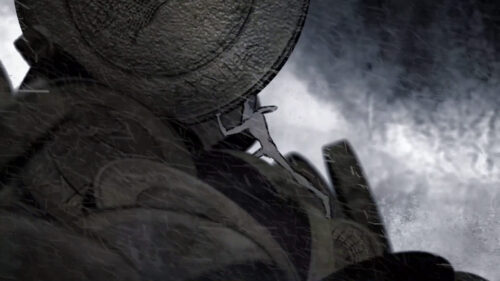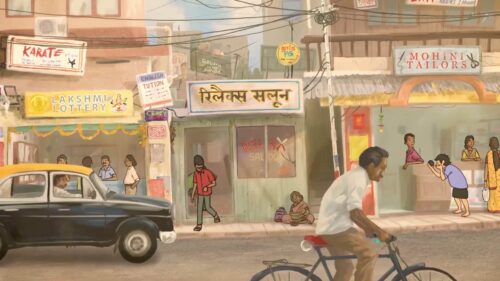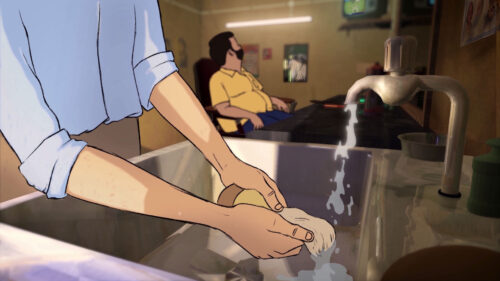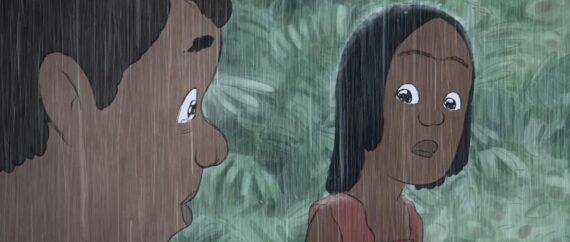Finding the routes of the beginning with Balaram J
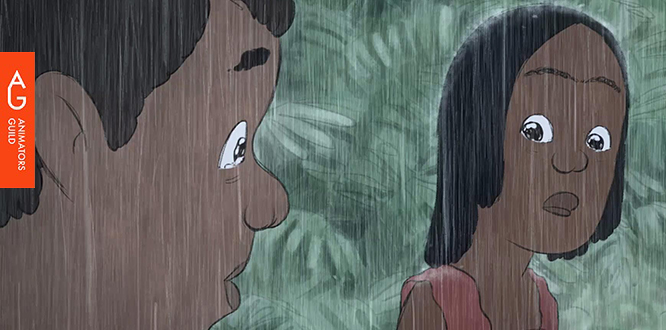
“Just a dumb kid, who doesn't know much about the working of the world, but who is very optimistic about contributing something good into the world.” is how Balaram J describes himself. This recent graduate of NID had solemnly pledged to fight the urge to engage with “stupid boxes”, what he called Television and Computers, when he was a kid. Fast forward 10 years and he is now working off a stupid box with one of the big names in Malayalam Film Industry, Lijo Jose Pellissery on his upcoming film “Churuli”.
Balaram’s beginnings into the world of stories was through cinema and comics, propelled by his childhood friend Jobin George. The two would spend hours cooking up superhero characters and their adventures.
He instilled the ambition of telling stories through films in me.
Charmed by the vivid world of James Cameron Films, Avatar - The last Airbender, and Ben-10, he thought he too, could create a fantastical world through Animation. Cultivating his skill through art lessons and active participation in writing and art forums paved the way for NID, and it is the culmination of that journey which brings us to “The Story of a Beginning”
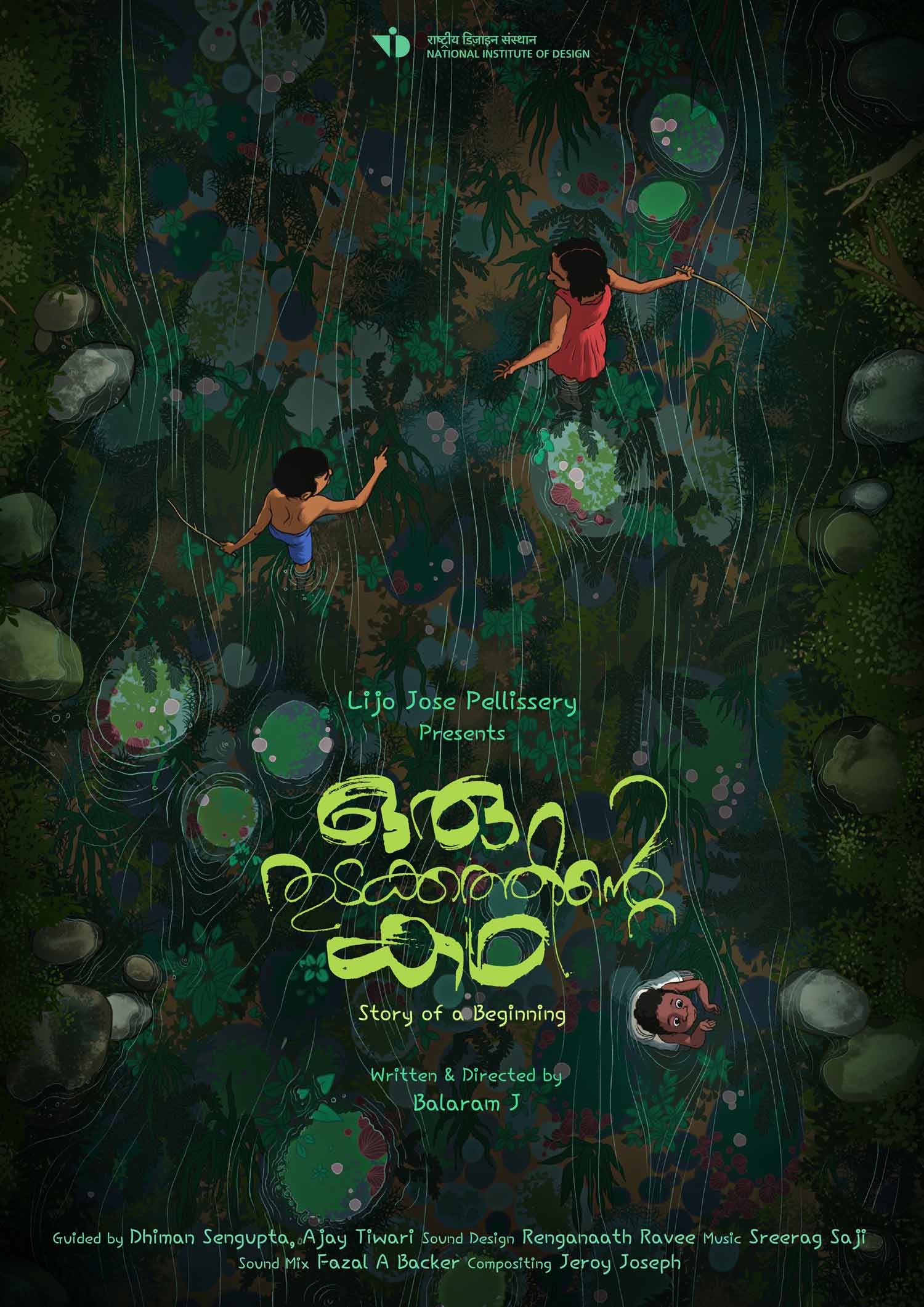
What inspired you to make this particular film ?
“Look around and within you, you shall find the story.” Debkumar Mitra (Debuda), one of my faculty, told me in a phone call. I tried to dive deep into my memories hoping to find a thread. I went through all my old sketchbooks. I found a few writings and sketches of concepts that I had noted down long back. I looked at contemporary issues which were bothering me. This was the time when there was a lot of communal tension in the country. The rise of religious nationalism in our country disturbed me.
I have equal respect for all religious beliefs. I find it pointless to fight over beliefs. Rather I believe that ‘our beliefs will save us and help each individual to reach their own harmony with life’. While I was travelling to northern kerala, a few of my childhood memories were playing in the back of my mind. One of them being me and my friend Ambadi journeying through the woods to find the source of a small stream that was flowing right in front of Ambadi’s house, where we usually used to play. This memory is still very fresh and vivid in my head.
There are these magical moments when stories take birth by themselves. They come to us like a flowing stream. Just like that, for me, a story had taken birth. I quickly wrote it down on my notebook, while sitting in the running bus on my way to North Kerala.

How did the collaboration and mentorship with Lijo Jose fall into place ?
Being an ardent fan of Lijo ettan’s works, I approached him for an opportunity to do my Graduation Film under his mentorship. He gave me the chance to do end credits animation for his 2019 film ‘Jallikattu’. Since the Malayalam film Industry works on modest revenues we didn't have a lot of time, and the titles were done with the help of my NID batchmates in a month. However, our Diploma project is 4 months. Post the completion of the titles, I pitched different concepts I had jotted down. We mutually decided to take the story of ‘Story of a Beginning’ forward.
When three kids set off to find the source of a stream, their differences in beliefs makes the journey a life changing one
Now that you had zeroed in on the idea, how did you figure your process ? What were the most challenging elements in making this film ?
In my first attempt to write the story, I let my subconscious mind take control over me and tried to put everything on the paper just as it came to me. I was surprised by the way the story took shape, with many unexpected twists and turns.
After the first few drafts,when I got the confidence that the reader will be able to make sense of the things that are happening, I read it to some of my close friends, with whom I usually discuss stories. They found the story simple and charming. I was happy with this first reaction. But the subtext (religious tolerance) did not get conveyed. My intention was to talk about the stupidity in religious conflicts, through the simple story of three kids.
In places like Kochi, which is where I live now, the dialectical differences in Malayalam (between the different religious communities) are not so evident. But in Northern Kerala these are more pronounced. To help bring in the religious subtext, I decided to get the dialogues of one of the protagonists, Abu (a Muslim character) written in their dialect.
One of the main reasons why I chose this story over few others was that this involved heavy character performance, interaction and dialogues, which I wanted to attempt, and this became the most challenging part of the whole process.
Lijo ettan suggested that I go to the village where I grew up and interact with the kids there, to pick up their way of speaking and doing things. This was a crucial step. So, in April, the month of Summer Vacation, I went to Onakkoor (where I grew up) and spent time with kids. I realised how difficult it was for them to say some of my dialogues. I edited my script as they acted out their version of the dialogues. The script improved as ‘written language’ made way for ‘speaking language’.
To take reference for character animation, we went to a nearby stream and acted out the whole script, this was very helpful.
Another challenge was cracking the script in English. Those who read the script in Malayalam liked it more compared to those who read the english version. Also the religious factor was absent in the english version as Abu was not a familiar muslim name outside Kerala and the dialectical difference was harder to bring out in the english language. My Guide, Dhiman Sengupta pointed out that the script was lacking conflict and stake. It came across as a simple children’s story and the religious issues I spoke of were not coming through. We went back and forth over many iterations.
I sought help in books, to understand how the film language and visual storytelling works, for I wanted to stay with the same story and improve it, because it all looked very good in my head, so now, how do I transfer that beauty into my film and ultimately to the viewers?
I sought help from Ajay Tiwari, who took our script writing course. Ajay, who later became my co-guide, pointed out a couple of loopholes in the script, both plot vice and concept vice. He helped me to strengthen the root idea and the characters.
The story evolved to a journey of three kids and the intervention of nature’s forces as they fight for nothing.
During my quest through books on film techniques and theories, I gained confidence as a filmmaker. I learned it is mostly about how you say it, rather than what you say. Every story/film is an evolving entity, sometimes we start writing hoping to convey something but we end conveying something else. And it is all right as long as it is stimulating you to invest your time in it.
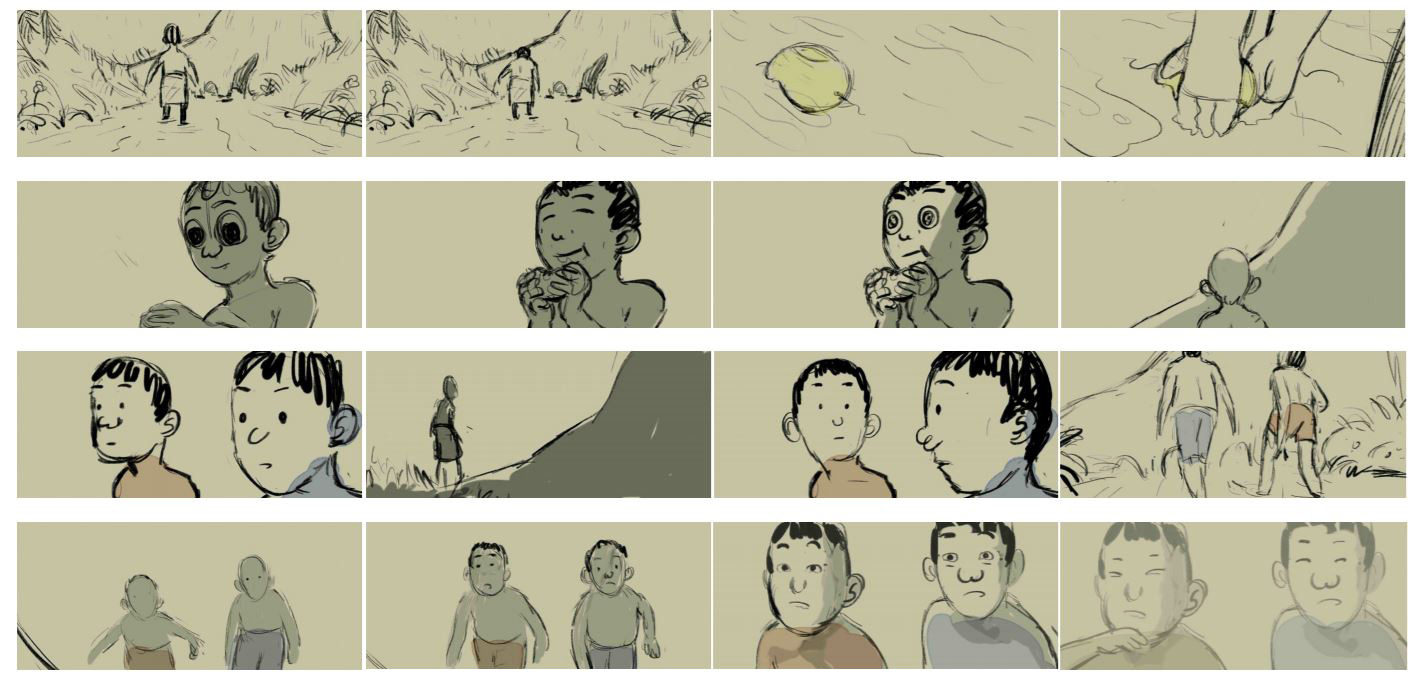
Manu Jose (actor), generously offered me to help in finding kids who have aptitude for voice acting and suggested going back to Onakkoor. He read the script and suggested considering a girl character in the film. Since the story was inspired from real incidents it was difficult for me to imagine any of the characters as a girl. But now that the story was finalised and the characters were developed to my level best, I was able to imagine Abu’s character as a girl! "Every story we tell is an opportunity to challenge the stereotypes and to empower the needy. Why can't a muslim girl play with the boys and take fight with them and be wild and adventurous?”, Manu asked. I was convinced. I liked my story more than ever with the addition of a girl character. The story became more dynamic with the arrival of the ‘Aisha’.
Another main challenge was managing the production. Because of lack of funds, I couldn’t hire an artist. Clean-up was more tedious than rough animation, because the rough animation was really rough as there was hardly any time for tie down. The head shape and the facial expressions were the most difficult things to crack. The reference video of kids acting and playing again came to help. Some of the scenes were acted by friends and myself, and I am afraid few animations in the final film do not have a child’s charm. Animation was done in TV Paint, Backgrounds in Photoshop, Compositing in After Effects and final editing in Premiere Pro. The whole process took one year to complete.
What has been the most rewarding part of this process for you thus far?
Interacting with kids, working with Sreerag saji (Composer), working in collaboration with Eunoians for post production and reading public’s comments about the film 🙂
During the visit to Onakkoor, I went to the same locations where I spent many joyous days. Documented the village and the people there. This time was very important, because it reminded me of the taste and feel of being in that village as a kid. This was the base for visual development.
We saw your other works (Kaanch & Jallikattu), and clearly you have an affinity towards and are skillful in visualisation and pre-production. How do you approach that ?
I am not entirely sure what to say! While doing treatments, I try to bring out the emotions and feelings I have about a story or a particular moment in the story, as raw as possible. I approach this purely like an artist, and not like a Designer. Mostly I stick to the treatment I come up with through this process and sometimes make modifications to satisfy the designer in me. While storyboarding, it is the designer in me who usually takes lead.
Sekhar Mukherjee and Debkumar Mitra, our dear faculties from NID, encourage us to tell stories from one’s own life and land. Since ‘Story of a Beginning’ is from my own life, pre-production was easy. What I enjoyed the most was to travel back to my home village, Onakkoor, for flora study!
How would you differentiate animation and direction for animation (seeing how you have juggled across the roles) ?
The process of animating is tedious (in my case, but many people love it). I think the person who takes up the role of ‘Animation Direction’ must understand the difficulty involved in it and help the animators to produce the best in their ability.
Who or what have been the key influences for your work?
I think I enjoy stories from Magical Realism space more, and hence I hope to create works of similar kind. In the recent past, I enjoyed Satoshi Kon’s and Hayao Miyazaki’s works a lot. Rajkumar Hirani brings a good balance of social commentary and entertainment into his films, I wish to achieve that in mine too.
Films (animation) that changed your life...
Many films have played a role in shaping who I am today. There was a time when I was obsessed with James Cameron's 'Avatar', and this is the film that first planted the seed of visual storytelling in my head. 'Good Morning Mumbai' (Troy Vasanth, Rajesh Thakare) and Interstellar (Christopher Nolan) made a huge influence over me at two particular moments of my life. 'Blind Vaysha' by Theodore Ushev always inspires me to come up with better concepts and 'Mind Game' by Masaaki Yuasa urges me to push the limits of Visualization
Tell us a bit about the people whose work you admire and why.
I admire people who push the limits of their field of work, and those who bring good changes in the way we see the world.
It makes a huge difference when you get to interact and be part of a circle which has passionate people. I am very fortunate to be in close relation with Pratheek Thomas and Tina Thomas (Kokaachi), Upamanyu Bhattacharrya (and Ghost Collective), Debjyoti Saha, Samyak Prajapati, and Lijo ettan and many more. Their passion, determination and sincerity towards their work inspires me everyday! I have come to admire passion and sincerity over talent and skill.
I am really proud of the Indian Animation Industry for the contribution it is making to the global market. This land has immense skill, I only wish to see more original contents coming from here. For that it is essential that we encourage and support original minds.
I also have so much respect for the works of Animators Guild, in cultivating and nourishing the animation community of India! I am humbled and thankful to AGI for giving me this opportunity to speak about the journey. Thanks a lot 🙂
What can we expect from your kitty next ?
A graphic Novel!
Balaram’s Film is currently in the festival circuit, the most recent being the Bangalore Film Festival. Keep your eyes peeled for the latest from this talented and enterprising young designer!
Credits of ‘Story of a Beginning’
Guided by: Dhiman Sengupta, Ajay Tiwari’
Written and Directed by: Balaram J
Sound Design: Renganaath Ravee
Music: Sreerag Saji
Animation and Background: Balaram J
Sound Mix: Fazal A Backer
Compositing: Jeroy Joseph
Studio Support: Eunoians Creative Studio, Kochi
Voice:
Kid – Aagney K Sunil
Aisha – Bhadra K S
Ambadi – Abhinand Sali
Casting Consultant: Manu Jose
Voice Recording: Lijo Maliyakel
Title Design: Athul Jayaram
Sound Effects Editor: Boney M Joy
Foley Artist: Mohammad Iqbal (Paratwada)
Foley Assistants: Mohammad Aaquib, Mohammad Shoaib
Foley Engineers: Dattaprasad Desai, Amandeep Singh, Sairaj Patil
Foley Studio: Purple Grape, Mumbai
Sound Edit Studios: D Studio - Kochi, Whiz Movies - Kochi
